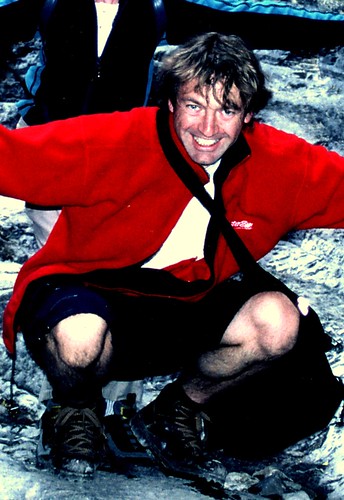
I guess it's hard to watch the 1925 black-and-white silent version of Ben-Hur without automatically comparing it to the later, more famous, Charlton Heston remake. However as I've only seen bits and pieces of that, I think I was able to come to this reasonably fresh.
Perhaps this gave me an advantage over its original audience, some of whom no doubt came to the theatre comparing it to the even earlier 1907 one!
Anyway, from the word go, this is an absolute epic.


Ramon Novarro throws himself into the title role with relish. Today, if anything, he and the rest of the cast bring a little too much energy, until one factors-in that that the early cinema had inevitably inherited a lot of big melodramatic gestures from the stage.

Yet it's still hard to believe that this film is really 83 years old. It's much more mature than today's standard Hollywood fare, taking the time to let us get involved in its story, without glossing-over cultural unfamiliarities.

The chariot race is thoroughly absorbing, maybe more so because it's given enough time to feel as though we actually watch the entire race. The musical score for this Thames Television release does an excellent job of evoking such a noisy atmosphere.
Also, in the scene where Judah Ben-Hur has to row in time to a beating mallet, the soundtrack takes the opportunity to sinc an actual beating drum into the score.

It's amazing, and oddly tragic, that the most expensive silent movie ever made didn't invest some small fraction of its giant budget in capturing the original sound. I know Vitaphone sound films only began the following year, but you can't help but look at the actors saying their lines and wonder how hard it might have been to just point a mic at them anyway, if only for the sake of doing so.

And for a silent movie, there's quite a lot of talking. I don't know what the actors were actually saying, but to defeat my point above, whatever it was, it wasn't always what the captions said. Another convention of the medium, perhaps? If not, then maybe a bit of realism – after all, the story hardly takes place in English!

One technique that this film helped pioneer was that of including some colour sequences, albeit seemingly with only blues and reds, here generally used to represent hope.
Speaking of which, perhaps more than anything else, this really is a film of incredible visuals.

Optical effects, gigantic landscapes and furious editing all fit together extremely well to make this film an absolute classic.
Rotten Tomatoes actually gives this film 100%, and, you know, I have to agree.

Awesome.
(review of the 1959 version here)


 :)
:)

 Brett
Brett Random Dave
Random Dave Scottish Dave
Scottish Dave Frank
Frank Greg
Greg Herschel
Herschel Jacob
Jacob Jean
Jean Joe
Joe Jonathan
Jonathan Melissa
Melissa Melva
Melva Paul
Paul The Reynolds
The Reynolds Rhett
Rhett Sara
Sara Sarah
Sarah Tim
Tim My church
My church
0 comment(s):
Post a Comment
<< Back to Steve's home page